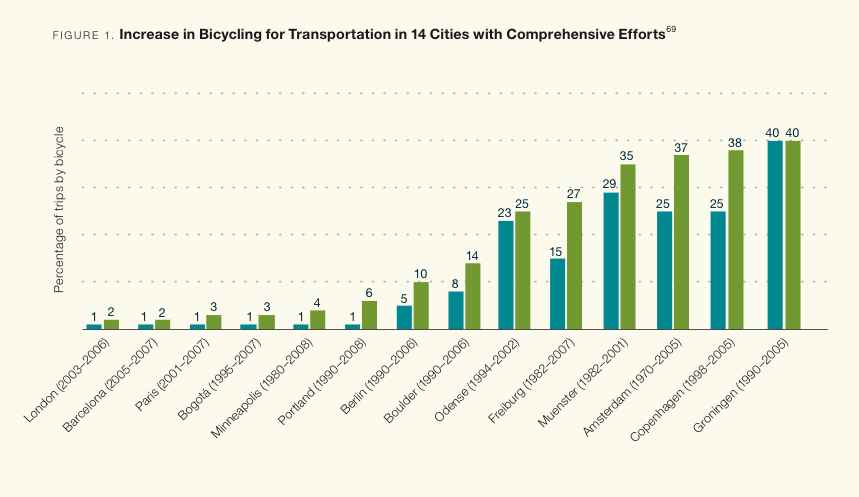ACTIVE LIVING RESEARCH
Introduction
Bicycling is healthy: it increases physical activity, improves cardiovascular health, and reduces obesity and disease. Bicycling also can be an excellent mode of transportation for people of all ages. In fact, bicycling to school has been shown to improve cardiovascular fitness and overall health among children and adolescents. As with virtually any kind of sport or physical activity, bicycling poses some risk of injury, but recent studies show that the health benefits of bicycling far exceed the health risks. Moreover,as bicycling levels increase, injury rates fall, making bicycling safer and providing even larger net health benefits.
Only 1 percent of all daily trips in the United States are made by bicycle, including fewer than 1 percent of trips to school by children younger than age 16.13,14 Many more trips could be made by bicycle, as 40 percent of trips made in the United States are shorter than two miles, which is a reasonable bicycling distance for most people. Recognizing this potential, many government agencies and public health organizations have advocated for increasing bicycling as a way to improve people’s health and reduce air pollution, carbon emissions, congestion, noise, traffic dangers, and other harmful effects of car use.
But what are the most effective strategies cities can use to increase bicycling? A growing number of studies have assessed the effectiveness of many strategies for increasing levels of bicycling, including on-street bike lanes, off-street bike paths, and other bicycling infrastructure; promotional and educational programs, such as bike-to-work days and bicycle training classes; and policies, including parking restrictions and traffic-calmed neighborhoods. This brief summarizes the available evidence about strategies for increasing bicycling levels and encouraging bicycling as a mode of transportation. It also presents related policy implications.
Read full report (PDF) here: How to Increase Bicycling for Daily Travel
About Active Living Research
www.activelivingresearch.org
“Active Living Research is a national program of the Robert Wood Johnson Foundation. Our primary goal is to support and share research on environmental and policy strategies that can promote daily physical activity for children and families across the United States. We place special emphasis on research related to children of color and lower-income children who are at highest risk for obesity.”
Tags: Active Living Research, Bicycling, childhood obesity. exercise, Daily Travel, fitness, Robert Wood Johnson Foundation, schools







 RSS Feed
RSS Feed